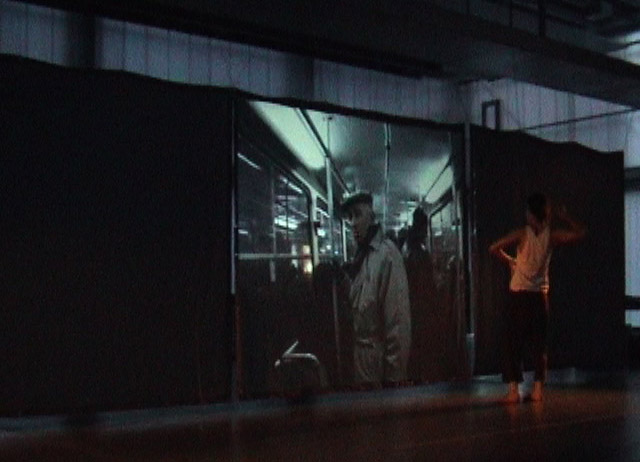
Scene 13. Inside Tram, Misinterpretation.

digital video actors (media) and real actors (avatars)
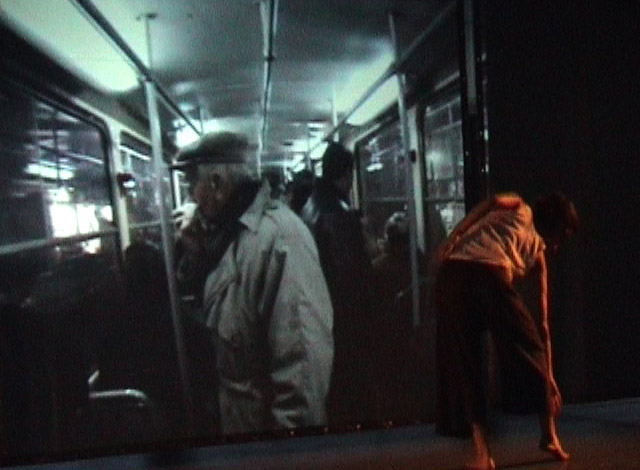 .
.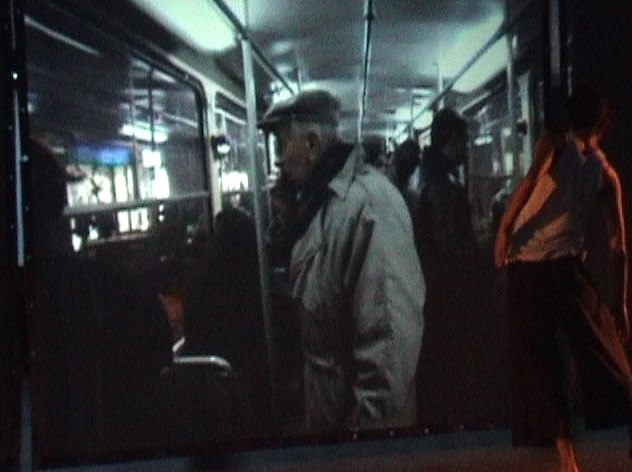 .
.
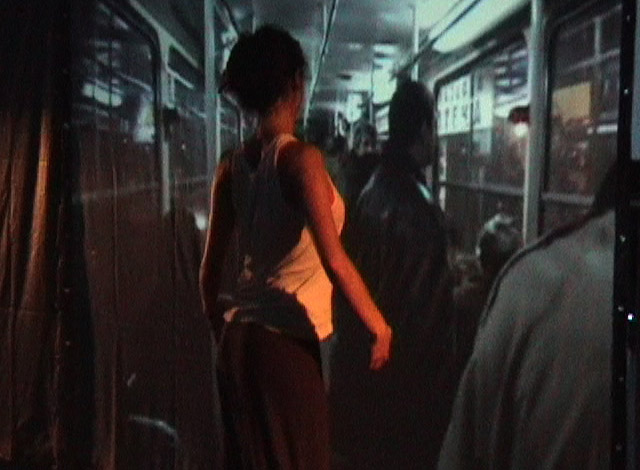 .
.
1. Introduction
A performer faces the triptych screen, interacting with the scenes of three simultaneously projected films /digital image streams.The old man in the tram (was that a tram in Athens, Amsterdam or Sofia? I am not sure) seems be aware of Ermira Goro, who looks at him, balancing her weight in the middle corridor of the tram that moves fast, it is winter time in the city, the light is grey, and slowly grows warmer, towards me and the spectators on this side of the screen. We look at the back of the woman who seems dressed for the summer, in a white shirt. She is barefoot.
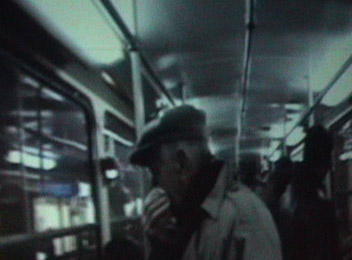 .
.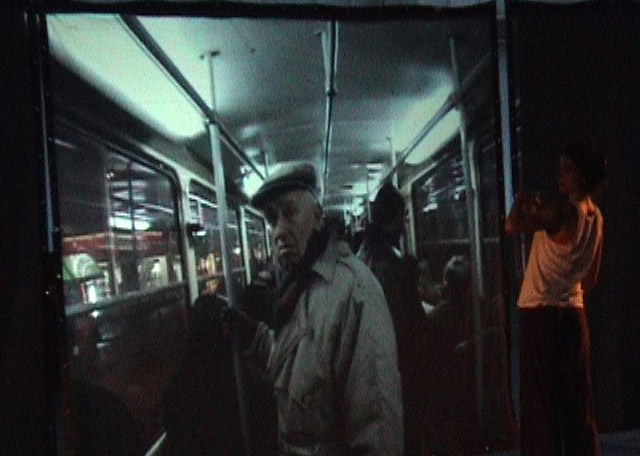 .
.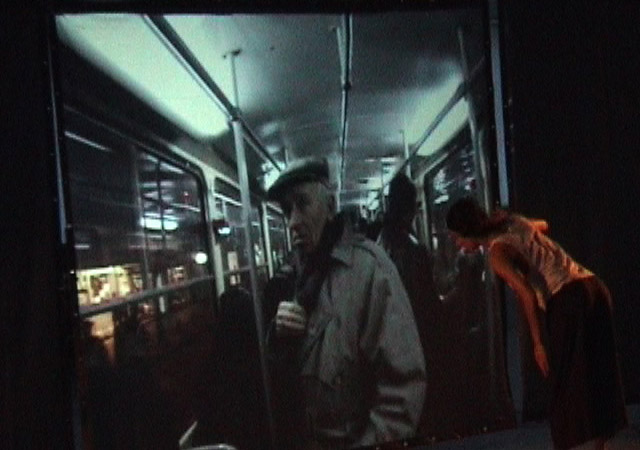
2. Virtual Tram-ride, or Augmented Theatre Reality
I look at the back of the woman who seems dressed for the summer, in a white shirt. She is barefoot. Behind her is an older amn in a coat. The women is looking at him, and he seems to notice it, but is too shy to turn around fully. He begins to watch her from trhe corner of his eyes. She is in his peripheral vision, he has eyes in his back. She gestures at him, she is in her mind. Her hand is reaching for the metal pole in the tram. She is in the tram and she is not in the tram.
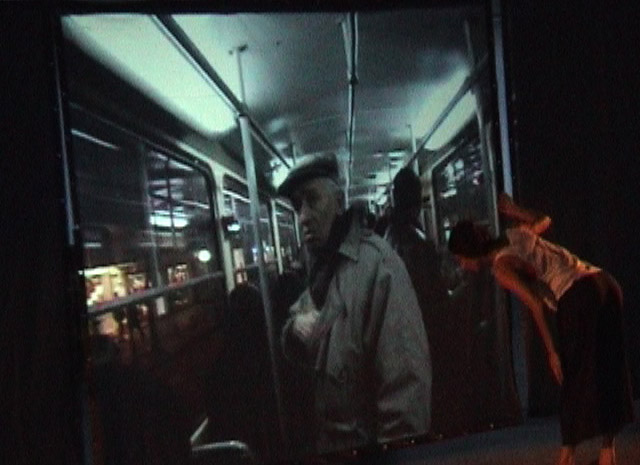 .
.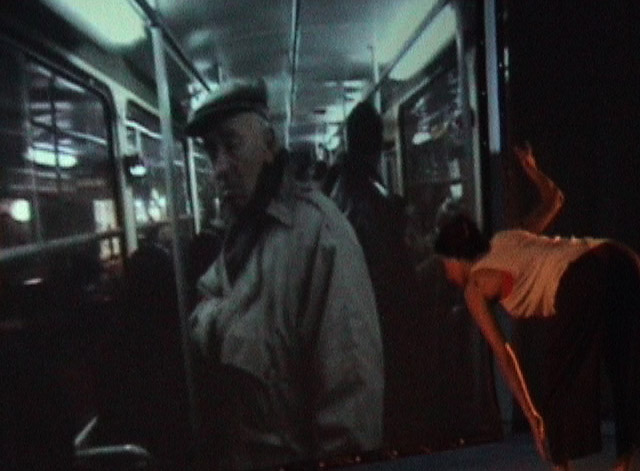 .
.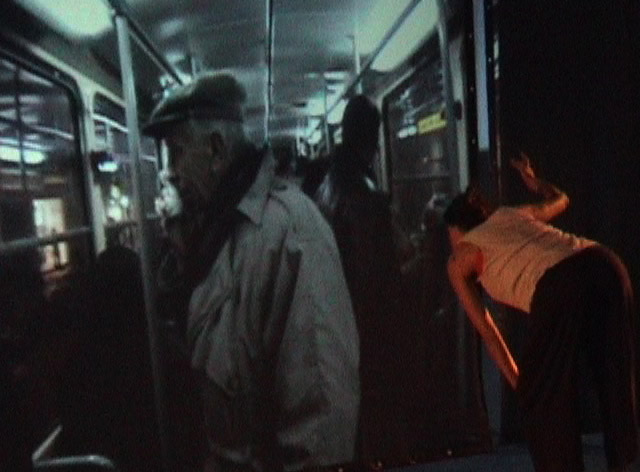
3. Strip tease. The club moves along.
The older man suddenly reaches into his coat pocket. He is about to pull a gun? No, it was only a handkerchief. He blows his nose. The woman has started to move very slowly and sensually, it appears she is transplanted, perhaps in her mind these passengers are customers in a club. the club is moving along the tracks of the train. She dances to the music, and the men in the club are blowing their noses.
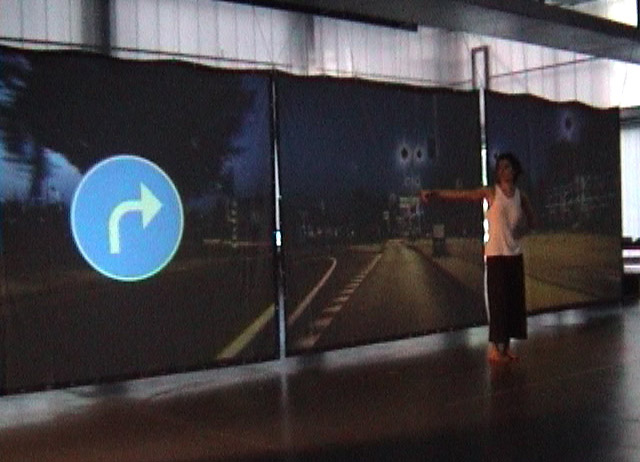
4. Sensorial
The woman's gestures and movements are careful. On her skin, she wears optical fibre sensors, and each small movement, the tiny shifts of muscles, has an effect on the movement of the films. The reality of the images is in reality one of image-movement control. As with any player (or recorder), different kinds of functions are possible. Stop, freeze, play, forward, rewind, fast forward. Jump to a different track.
5. Wearable Film
In our work, we explore these trackings. The films and the movement of the performer are a combination of interface relationships that allow the dancer to wear (not the sensors alone, and thus the data generation in her muscle and motor movement) the film or the action of the images. The media are actions and the actions of the performer act upon the unspooling of the images.
We will have to analyze the nature and kind of images that are used here. The scene in the tram is a scene in the theatre or gallery, and thus the inter-action of performer and projected film is the ground of the research. On the semantic level, one would need to think about why the performer controls the image instrument, and how.
6. A note on digital video-actor (film data).
Ioanna's film footage for the new work has been recorded with specially mounted triple camera allowing tracking shots and moving recordings that combine a central p.o.v. with left p.o.v. and right p.o..v
The film material has a documentary quality, i.e. the shots were not staged or scripted or storyboarded, but the camera were taking in the urban life in Athens, Sofia and Amsterdam as it happened in the times of the shoots (2005-2006).
Even within the presumably random or unedited documentary material, there are some scenes that stand out as a "character" in the digital video seems to appear, or figures in the landscape can be identified. The question of how such video footage works in a live game performance needs to be addressed. Another very conmplex question is posed by the scenographic arrangements of the triptych video with small performance corridor. The live actor is very close to the projection surface, and in fact often seems to be glued into it or perform into the digital media objects or digital actors.